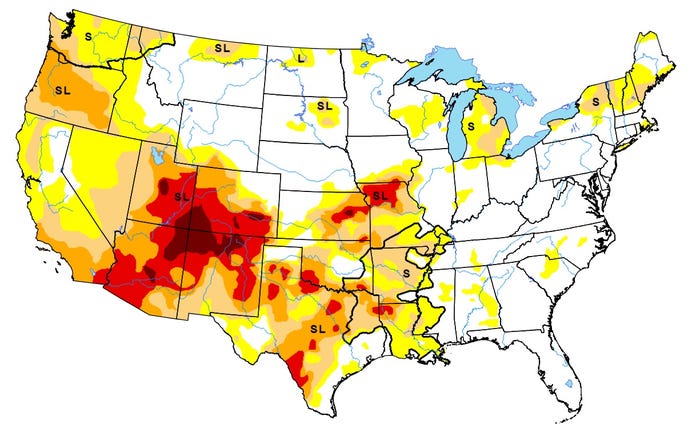
Cool but mostly dry weather overspread the Corn Belt, favoring reproductive to filling corn and soybeans— except in areas with lingering soil moisture shortages. Cool air eventually encompassed large sections of the Plains and mid-South. However, heat persisted through week’s end across much of Texas, as well as the Great Basin, Desert Southwest, and Pacific Coast States. Western weekly temperatures averaged as much as 10°F above normal.
Including Alaska, more than 100 Western wildfires were active at the end of July, with some of the most dangerous blazes burning in the Pacific Coast States. Significant Western rainfall was largely confined to the central and southern Rockies and parts of the Desert Southwest. Heavy showers, triggered by the interaction between cold fronts and moisture associated with the Southwestern monsoon circulation, also soaked the central High Plains and environs. Drenching rains fell in the Atlantic Coast States, where weekly totals of 4 to 8 inches or more were common from eastern North Carolina into southern New England. The Northeastern rain eased or eradicated drought but sparked flash flooding. In contrast, only light showers dotted the Midwest, while little or no rain fell from central and eastern Texas to the Mississippi Delta.
Check out the gallery for more details.
About the Author(s)
You May Also Like




